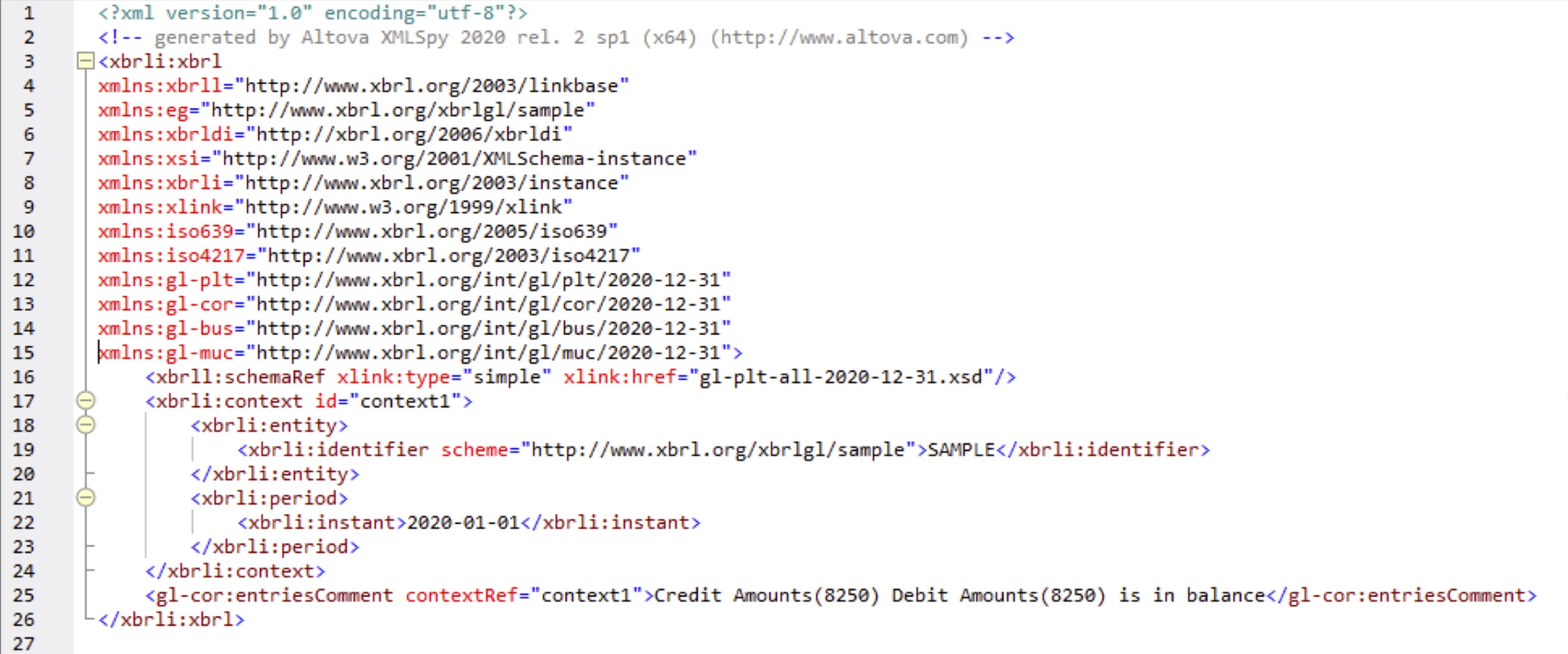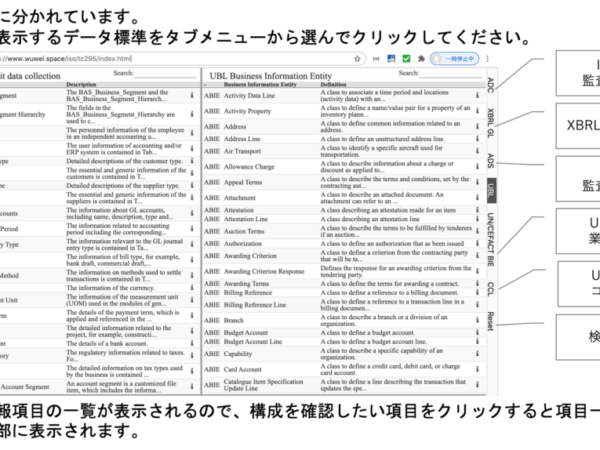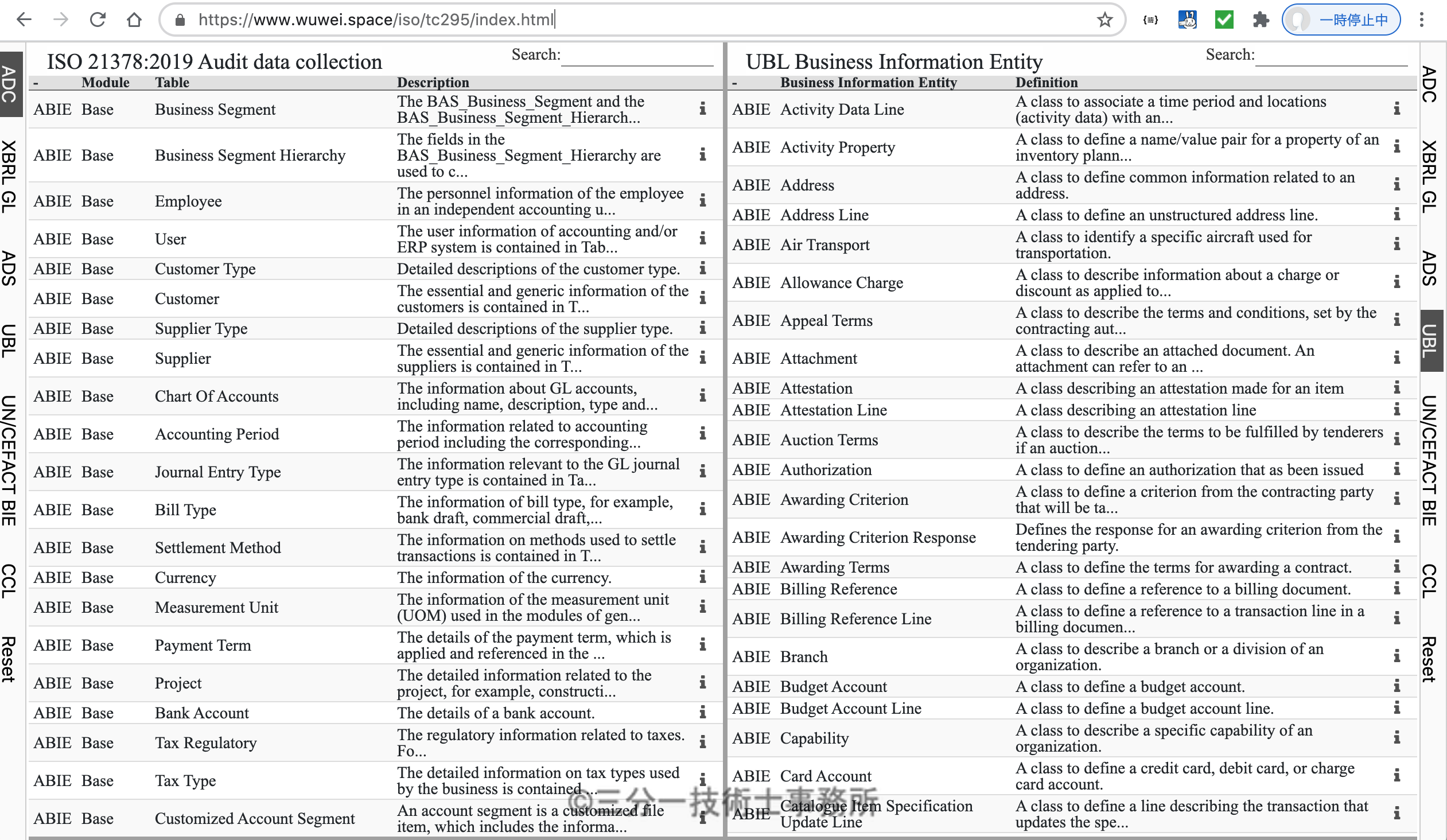Month: July 2020
-
![Proof-of-concept implementation trial of international standard data formats 5(XBRL2.1 without child tuple1 )[in trial]](https://www.sambuichi.jp/wp-content/uploads/2020/07/e99cc3808964d9e08ec8fb27d43842de.png)
Proof-of-concept implementation trial of international standard data formats 5(XBRL2.1 without child tuple1 )[in trial]
Consider what happens if you define it in the dimension hypercube without using the definition link.
-
![Proof-of-concept implementation trial of international standard data formats 4(XBRL 2.1 table linkbase)[in trial]](https://www.sambuichi.jp/wp-content/uploads/2020/07/fig19-scaled.jpg)
Proof-of-concept implementation trial of international standard data formats 4(XBRL 2.1 table linkbase)[in trial]
Views: 80 Note: Currently under trial. It has not been resolved yet. Definition Specify the parent-child relationship based on the presentation linkbase in Breakdown on the Y axis. We are currently studying how to define the X-axis. In CSV files etc., the dI would like to be able to define one-dimensional based on table links.efinition of 2 dimensions is not necessary, only the definition of 1 dimension (heading column) has meaning, and the table is defined by repeating records. Note: The files can be found at GitHub. Execution result Altova XML Spy X axis does not expand well. Although the presentation linkbase item was displayed at the time of definition, only […]
-

Proof-of-concept implementation trial of international standard data formats 3(XBRL 2.1 formula)
Specify xbrli:xbrl for ancestorFilter, target all items including characters in typedDimension, add up the total amount of credit with test=”../gl-cor:debitCreditCode eq 'C'” and debit with ‘D’ in test of the filter, and verify whether the total amounts match.
-

Proof-of-concept implementation trial of international standard data formats 2(XBRL 2.1 instance document)
Implement definition linkbase (requires-element) relationship using typed dimension accountingEntries – entryHeader – entryDetail In XBRL GL, an instance document is defined in a nested structure of ComplexContent without using Context. By setting the maximum number of repetitions of child elements, multiple entryHeaders are expressed under accountingEntries, and multiple entryDetails are expressed under entryHeader. Arbitrary repetition is possible. When disassembling this, the problem is how to express the relationship between accountingEntries and entryHeader and the relationship between entryHeader and entryDetail.
-

Proof-of-concept implementation trial of international standard data formats 1(XBRL 2.1 taxonomy)
Views: 76 UN/CEFACT Core Component Technical Specification(CCTS) I will re-post the contents introduced in ISO 21378 Audit data collection data model definition based on UN/CEFACT CCTS and comparison with other standards including XBRL GL. Association Business Information Entity defines Aggregation in CCTS. Association is required to define Audit data collection data model. [Definition] Business Information Entity (BIE) A piece of business data or a group of pieces of business data with a unique Business Semantic definition. A Business Information Entity can be a Basic Business Information Entity (BBIE), an Association Business Information Entity (ASBIE), or an Aggregate Business Information Entity (ABIE). [Definition] Basic Business Information Entity (BBIE) A Business Information […]
-

How to use the standard data format comparison page
Views: 108[jwplayer player=”2″ playlistid=”3775″] Screen is divided horizontally. Select a standard and click the tab menu to display the configuration.A list of aggregated business information (ABIE) is displayed. Click the item whose configuration you want to check, and the screen that expands the item list will be displayed at the bottom. Note: The response may be delayed and a different item may be selected. Move the cursor over the item and change the line color before clicking. A (+) icon is displayed at the left end of the Association Business Information Entity (ASBIE). Click the row of selected Entity to expand the related Aggregate Business Information Entity. Click the I […]
-

ISO 21378 Audit data collection data model definition
Views: 82ISO 21378 Audit data collection data model definition based on UN/CEFACT CCTS and comparison with other standards including XBRL GL We are currently investigating other standards to clarify the data architecture of the audit data collection. The goal is to define an ADS data model based on the Core Component Technical Specification (CCTS) defined in ISO 15000-5. A comparison site (https://www.wuwei.space/iso/tc295/index.html) is in development. This site helps to check similarities and differences between following data model, namely, UN/CEFACT core component libraries and business information entities, OASIS Universal Business Language (UBL), AICPA’s audit data standards (ADS) including XBRL GL, ISO 21378 audit data collection. This site is constructed by analyzing […]

